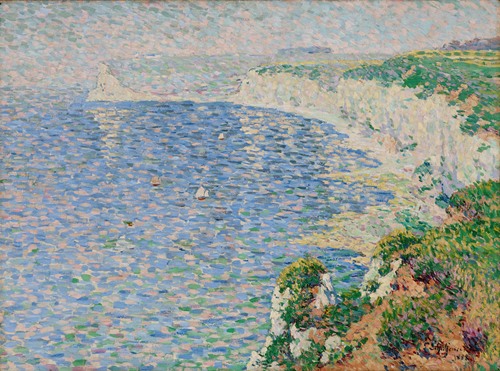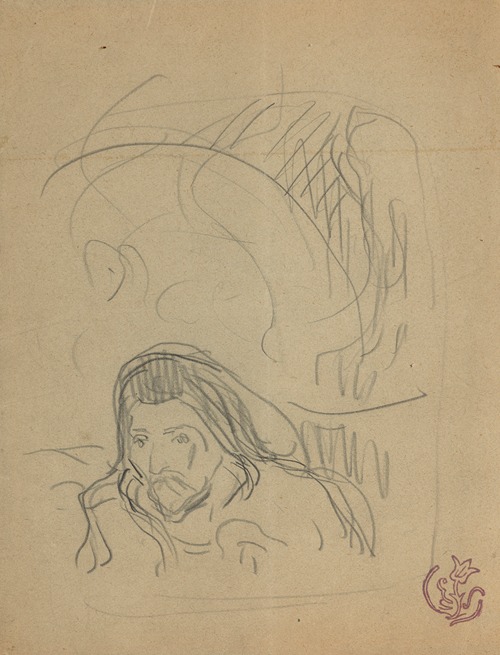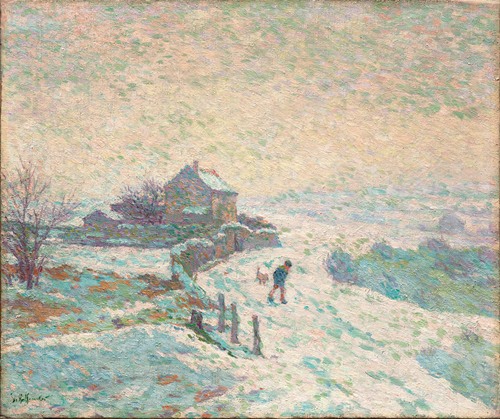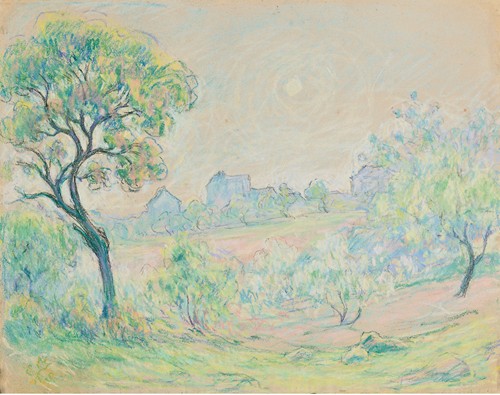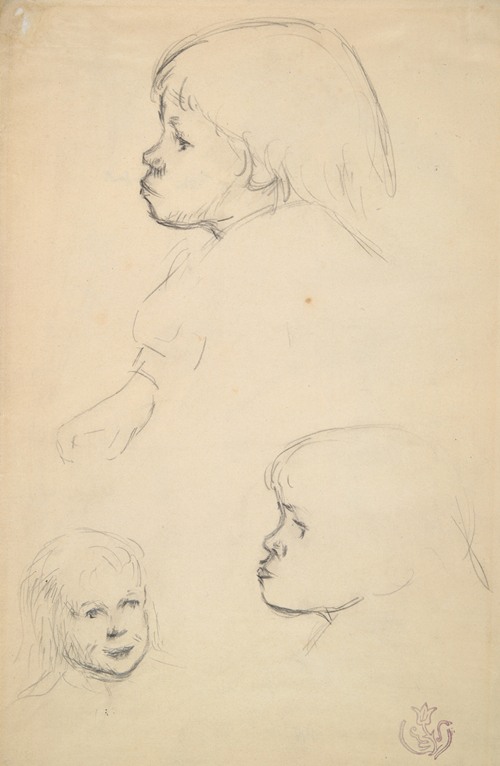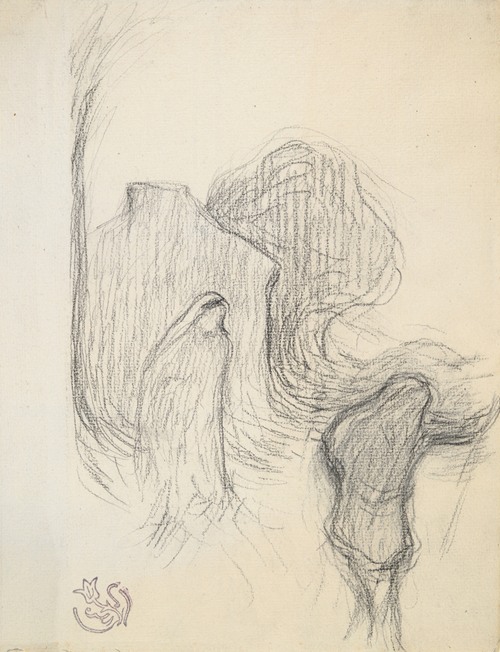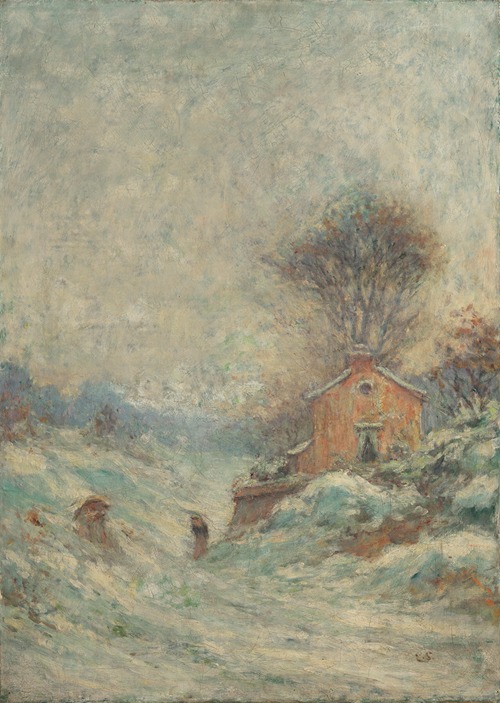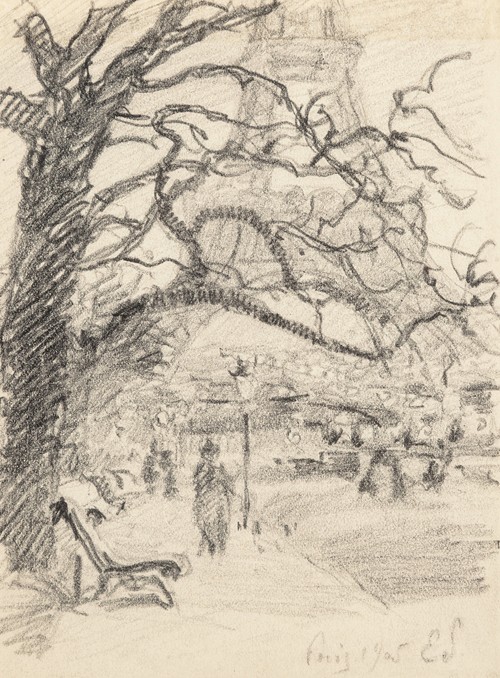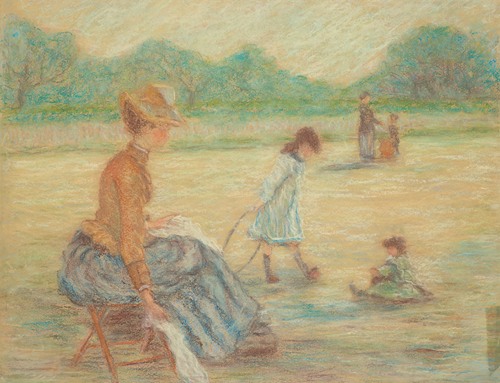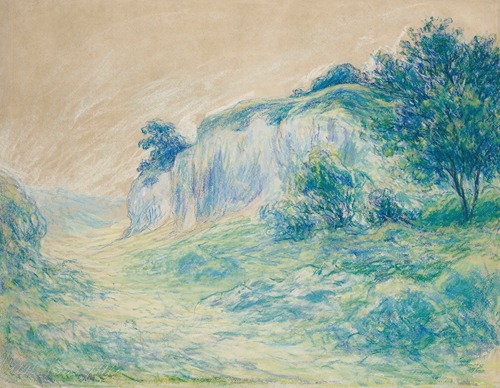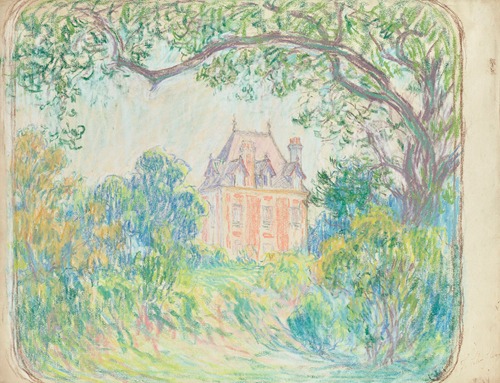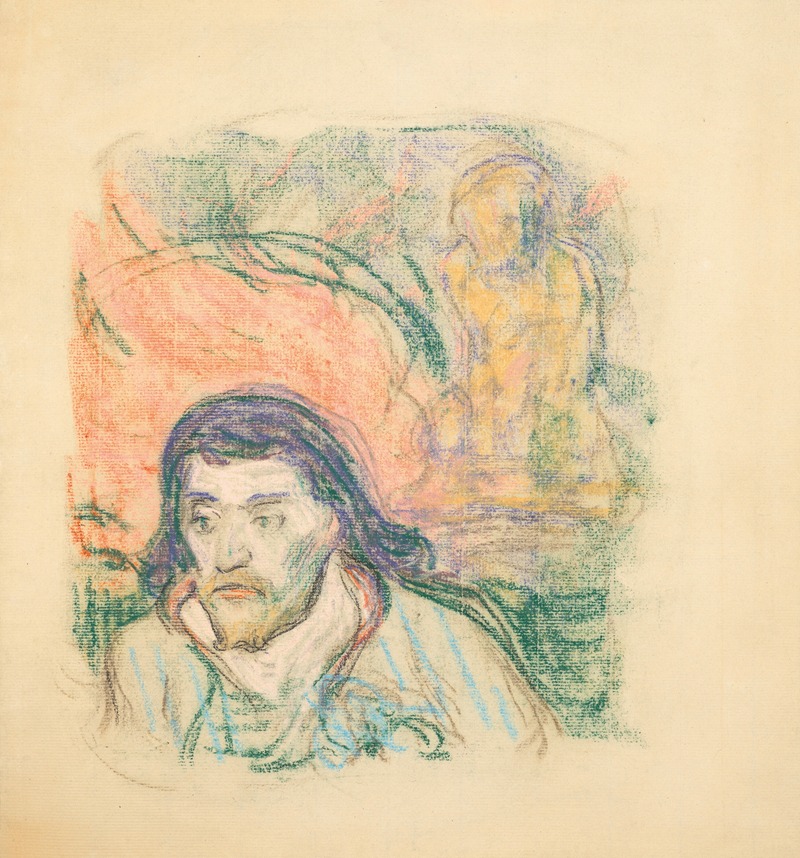
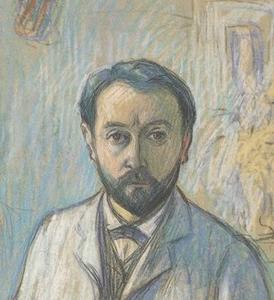
Claude-Émile Schuffenecker was a French Post-Impressionist artist, painter, art teacher and art collector. A friend of Paul Gauguin and Odilon Redon, and one of the first collectors of works by Vincent van Gogh, Schuffenecker was instrumental in establishing The Volpini exhibition, in 1889. His own work, however, tends to have been neglected since his death—and even worse, recent season campaigns in the media have reactivated resentments virulent since the late 1920s, when Schuffenecker was suspected to have imitated the work of other contemporary artists, among them, Van Gogh. Still a contentious issue, it has not been established whether or not he produced forgeries. Meanwhile, serious scholarly research at least has provided the base for a sober historical approach to Schuffenecker's life and work.
Claude-Émile Schuffenecker, son of Nicolas Schuffenecker (1829–1854) and Anne Monnet (1836–1907) was born in Fresne-Saint-Mamès (Haute-Saône). His father, a tailor originating from Guewenheim (Alsace, today Haut-Rhin), died when Émile was little more than two years old; the same year his brother Amédée was born in Charentenay (Haut-Rhin). The widow with her two boys moved to Meudon, close to Paris, where part of her mother's family lived, and where she had found work at a laundry. In the years to follow Émile was raised by his mother's sister, Anne Fauconnet Monnet, and her husband Pierre Cornu in Paris, educated by the Frères des Ecoles chrétiennes, and started work in his uncle's business, a chocolate and coffee-roasting facility in the Les Halles quarter.
On 28 February 1872, Schuffenecker joined the broker Bertin, where he met Paul Gauguin; they became close friends. Both used to study the Old Masters at the Louvre, and worked at the Académie Colarossi. In 1880, Schuffenecker married a cousin, Louise Lançon (1860-); their daughter Jeanne was born in 1882, their son Paul in 1884. In these years, however, the economic situation decreased. By 1880, both Schuffenecker and Gauguin evidently had gained enough money to leave Bertin - just in time before the French Panama canal project began to turn into a disaster - and to try to stand on their own feet: Both opted for a career in the arts, and probably for additional income at the stock exchange. Then, in January 1882, the Paris Bourse crashed, and while Gauguin chose to remain independent, Schuffenecker decided to apply for the diploma to teach. Two years later, he was appointed to teach drawing at the Lycée Michelet in Vanves, with the painter Louis Roy as a collegial friend.
Much has been said about Gauguin's portrait of "le bon Schuff" and his family, painted early in 1889 in Schuffenecker's studio, soon after Gauguin's return from Arles: judging from Gauguin's portrait, the personal relations of the couple are widely considered to have been precarious. Since Gauguin's return from Denmark, in 1885, he had been welcome to stay at Schuffenecker's, but soon after his return from Brittany in 1890, Gauguin was asked to find a place elsewhere. Rumours (most probably initiated by Émile Bernard) spread that Schuffenecker had been betrayed by his wife, and for years, he separated himself from his family, until in 1899, his wife demanded a divorce and won the right of custody over their children.
He left the Lycée in 1914.
Schuffenecker died in Paris, 33 rue Olivier de Serres, and was buried at the Montparnasse cemetery on 3 August.
